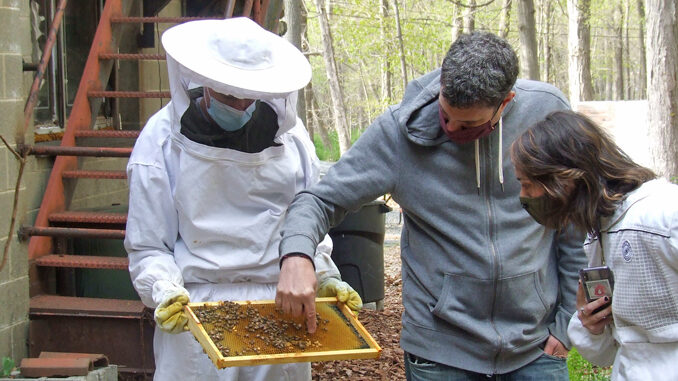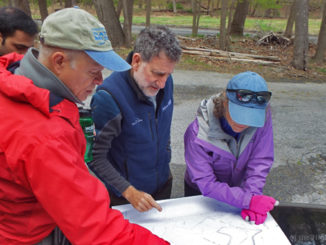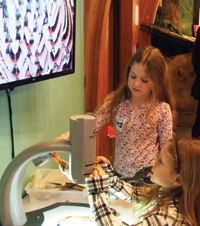
Plus a volunteer to take care of it
The Wildlife Education Center got a new bee collection on Earth Day and a person to look after it.
The two acquisitions occurred by chance.
The Rothmans were walking past the center with their dog when they noticed a woman cleaning out the bee hives. Another family would have kept on walking. But being bee collectors, Kevin and Zachary Rothman wanted to get a closer look. So they approached the woman and started a conversation.
They learned she was Taylor Ouellette (pronounced Wi-LET), the manager of the center. She was cleaning out the hive because its occupants had not survived the winter. And the person who was supposed to take care of them was no longer on staff.
It was a problem the dog-walkers could fix. They offered to donate a new collection of bees to the museum. And Zachary said he would visit once a week to look after them. He also volunteered to host a program on bees for the museum’s guests.
Zachary, a freshman in high school, has been a beekeeper for three years. I asked “why” and then realized it was a stupid question. The teenager shrugged and said it was a hobby. He also runs cross country and plays tennis. People do these things because they’re interesting or enjoyable.
“Ever get stung?” was the next obvious question.
Zachary admitted it had happened two or three times. But the experience hadn’t discouraged him. And it didn’t happen on April 22 when he introduced the bees to their new home.
As a safety precaution, he put on a hood and gloves. He offered me the same gear, but my plan was to stand far away and use the zoom lens on my camera.
As time passed, I moved closer. The bees were so docile that Zachary’s father (Kevin) was able to point to the queen and then show us the honey. Ms. Ouellette leaned over for a closer look.
The bees’ new digs looked more like a box to me.
Kevin narrowed the opening so insects larger than a bee couldn’t get in. He said that wasps might be attracted by the sweet smell of the honey.
The Rothmans estimated that they had brought 5,000 bees. And no one was going to make a count to see if they were right. A few of the bees remained in the case in which they had arrived. The Rothmans left the case near the hive and hoped that these exiles would join their mates.
(The Wildlife Education Center, part of the Museum of the Hudson Highlands, is closed to the public until further notice. It is located at 25 Boulevard, Cornwall-on-Hudson.)



